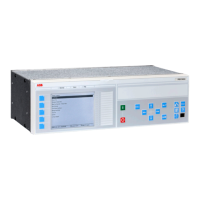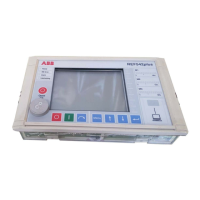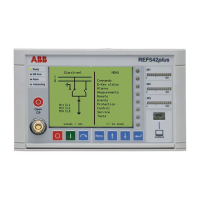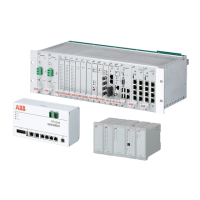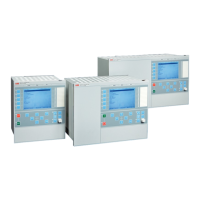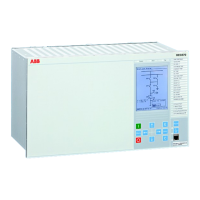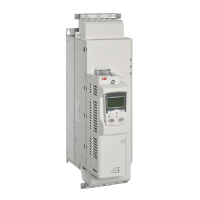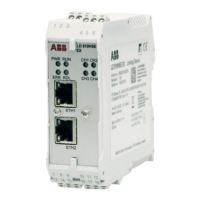IEC00000276 V1 EN (Equation 32)
Where:
IEC00000275 V1 EN
are the measured phase voltages
4. Compare the result with the set value of the zero-sequence operating voltage
(consider that the set value 3U0> is in percentage of the base voltage.)
5. Repeat steps 1 and 2. Then slowly increase the measured current in one phase
until the BLKU signal disappears.
6. Record the measured current and calculate the corresponding zero-sequence
current according to the equation (observe that the currents in the equation are
phasors):
0 L1 L2 L3
3 =I I I I× + +
IECEQUATION00019 V1 EN (Equation 34)
Where:
IECEQUATION00020 V1 EN
are the measured phase currents
7. Compare the result with the set value of the zero-sequence operate current.
Consider that the set value 3I0< is in percentage of the base current IBase.
10.8.2.4 Measuring the operate value for the dead line detection function
1. Apply three-phase voltages with their rated value and zero currents.
2. Decrease the measured voltage in one phase until the DLD1PH signal appears.
3. This is the point at which the dead line condition is detected. Check the value of
the decreased voltage with the set value UDLD< (UDLD< is in percentage of the
base voltage UBase).
4. Apply three-phase currents with their rated value and zero voltages.
5. Decrease the measured current in one phase until the DLD1PH signal appears.
6. This is the point at which the dead line condition is detected. Check the value of
the decreased current with the set value IDLD< (IDLD< is in percentage of the
base current IBase).
10.8.2.5 Checking the operation of the du/dt and di/dt based function
Check the operation of the du/dt and di/dt based function if included in the IED.
Section 10 1MRK 511 360-UEN A
Testing functionality by secondary injection
138 Bay control REC670 2.1 IEC
Commissioning manual
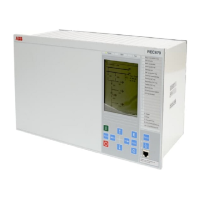
